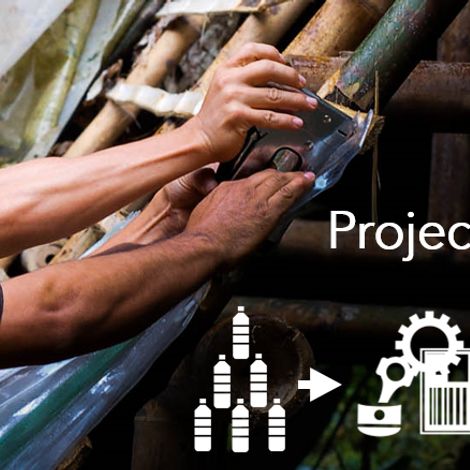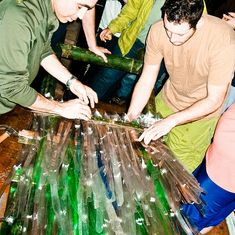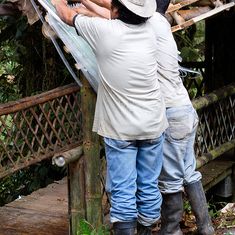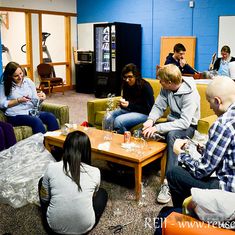PET Thatch Project





Billions of plastic bottles are tossed as trash across the world. Through PET Thatch we aim to give them a second, more opportune life—thatch roofing. Throughout much of the developing world, palm-thatch roofs are a staple of everyday life but they bring along a host of issues. Our thatch made from cut plastic bottles allows natural illumination, long-lasting durability, and protection from disease carrying pests.
The project started in 2010 when a Duquesne University professor went to Ecuador with a hand-cranked cutter that could cut bottles into strips. With the help of locals he put up a roof over a school. In 2012 the idea was brought to the Engineers Without Borders chapter at Carnegie Mellon.
Since, students have been engineering the process of actually taking a PET bottle cutting it, flattening it and assembling it into thatch. Through numerous cycles of prototyping and materials testing we are arriving at a single process of collecting, cutting, and fusing strips of PET together using a student built apparatus.
This August we will conduct field tests in Ecuador as a group of students to field- build, test, and record our first roof to be assembled as a whole team. Through this field-test the PET Thatch Project will: 1) demonstrate how to reuse waste plastic bottles more efficiently than traditional recycling (using far less energy in our process), 2) provide valuable experience in engineering and sustainability, 3) create a powerful symbol of how we can better use resources and 4) demonstrate how we can create jobs and businesses from these waste products.
In conjunction with the non-profit, Reuse Everything Institute we will use the results from the Ecuador trip to demonstrate real world applicability of our project and further develop the organization and process of the PET Project. Simultaneously, we are planning to expand our process more locally by starting with PET fencing for use in Pittsburgh parks and increase the reuse of waste materials at home.